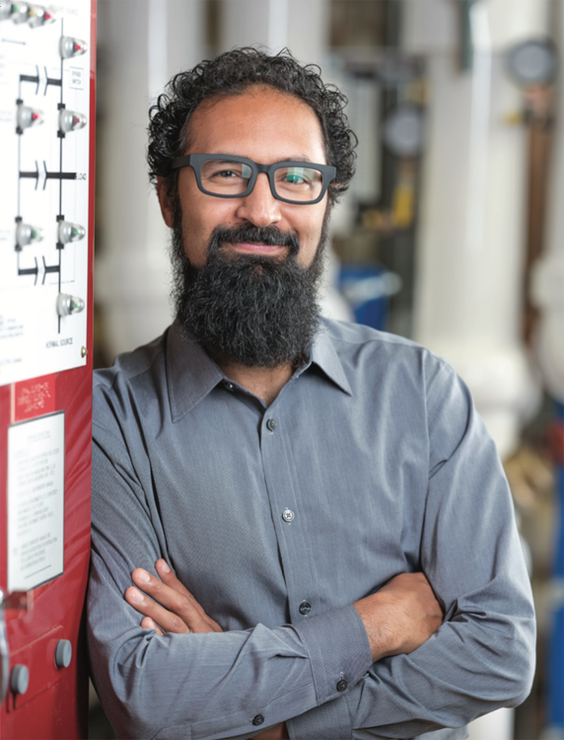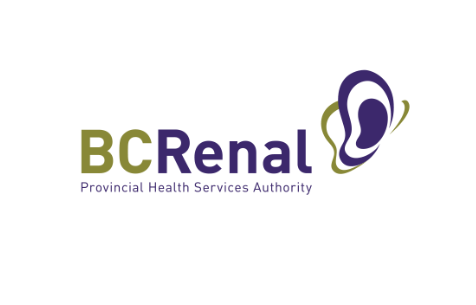Image: Kori Jones, Energy Manager, Vancouver Coastal Health
Originally printed in the Vancouver Sun, March 22, 2018.
BC Hydro works with many B.C. organizations to strategically manage plans around energy efficiency. The important work being done by some of this province’s leaders in energy management is being featured in this space. This month, the discussion highlights how the health-care industry can benefit from energy efficiency.
Without strategic energy management, Kori Jones says, there’s a possibility that energy efficiency might not get enough attention in the health-care conversation.
“When you think of hospitals or health care, energy management isn’t the first thing you think of,” the Vancouver Coastal Health energy manager explains. “It’s not just looking at utility bills — we actively seek opportunities to minimize environmental impact from our facilities, because environmental impacts and health outcomes are directly linked.”
That’s where strategic energy management (SEM) comes in. It involves setting specific energy efficiency goals, measuring progress and communicating about achievements over the long term.
Without SEM, Jones says upgrade projects would often still move forward, but they might not include the long-term benefits of investing in high-performing energy infrastructure. That in turn might mean missed opportunities and delays in achieving measurable progress. In contrast, strategically planning out initiatives allows the team to incorporate energy efficiency at critical moments and time projects so they achieve the best possible results. It allows Jones and his team members to regularly engage with stakeholders about why energy efficiency is a priority.
He says it helps to constantly revisit the idea that the environmental impact from projects will benefit patients served by Vancouver Coastal Health. For instance, upgrading light fixtures to incorporate light-emitting diode (LED) technology saves both energy and money, meaning more funds to address health-care needs. The improved light quality also makes for more comfortable surroundings for patients and staff.
Robert Bradley is the acting director, energy and environmental sustainability for the Facilities Management team serving the Lower Mainland health organizations; he served as the energy manager for Fraser Health until September 2017. He agrees that SEM allows for a more universal perspective on projects.
Without strategic energy management, you start to work in silos — you won’t have collaboration and buy-in and support,” he points out. “These are big portfolios — different teams need to work together to keep these buildings operating as efficiently as possible.”
The team has an ongoing initiative to improve the efficiency of the demand control ventilation systems at various buildings. Previously, the fans providing fresh air and the exhaust systems were running at 100 per cent around the clock. The energy team realized that was unnecessary because the spaces in question didn’t always have people in them.
Any changes made could not contravene health code requirements around ventilation and infection control; that’s where collaboration played a key role in solving the challenges involved. Thanks to feedback from different stakeholders, the team has tested out changes in speed and airflow, as well as deploying carbon dioxide sensors to detect when the spaces are not occupied.
Having a strategic energy management plan is proving to be very helpful in managing the upgrade of Surrey Memorial Hospital. Bradley says it provides structure for onsite staff to offer input into the process, and opportunities to keep checking back on how to incorporate conservation measures. It also helps define a realistic timeline to complete specific tasks.
He acknowledges strong business cases for particular initiatives — where specific dollar and energy savings and payback times are outlined — are crucial because budgets are tight; SEM helps identify where the team will get “the most bang for its buck.”
Bradley echoes Jones in saying that projects often create benefits beyond energy and cost savings. Upgraded equipment increases mechanical reliability and updated lighting gives staff more control over patient spaces.
“There are lots of studies that show patients with mental health issues respond well to natural light, so the ability to control types of light, light levels and colour temperature is really important,” he explains. “We actually have a medical researcher currently looking at the effects of changing colours and light levels at certain times of day, teamed up with us and BC Hydro.”
Joe Ciarniello, manager of energy management for the Vancouver Island Health Authority, says all of these benefits can definitely help make the case to proceed with a project. Having SEM in place helps communicate these ideas to senior leadership figures, while allowing for adjustments as needed.
“The best laid plans don’t always come to fruition, so you have to keep updating as things change,” he says. “Part of our strategy is to regularly reassess conditions — a plan developed five years ago isn’t something that you can count on year-in and year-out, you have to keep revisiting it on a fairly frequent basis.”
As energy management matures, Ciarniello sees the focus moving increasingly toward continuous improvement in operational performance, and moving away from heavy reliance on equipment and technology upgrades to realize savings.
He is grateful for BC Hydro’s support of the energy manager program and the energy management assessment process, where specific strengths and weaknesses in an organization’s plan are identified and then guidance is provided on the best way to proceed.
Vancouver Coastal Health Energy Manager Jones also appreciates that process, saying it helps tell the story of how energy efficiency can be woven into health care in a proactive fashion.
He says it’s clear people are growing used to thinking more about energy efficiency within health care; onsite staff are proud when they can participate in making projects work more efficiently and are happy when their concerns can be addressed alongside energy initiatives.
It’s not just about checking our metrics, creating that relationship with our site staff is really important,” Jones says. “Everyone who works in health care — by nature — they care deeply about finding meaning in their work. They’re invested in their communities and hospitals — this is another avenue for them to know they can make a difference.”









